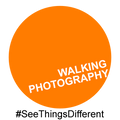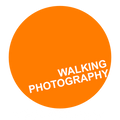Start Your Photographic Year on the Right Foot with this Tip

Here's something that comes up pretty regularly on my workshops and lessons. If you're adding photos from your camera straight to your laptop or computer (like many people do) at some point you're going to run out of space and that's when the real headaches start! In this video I quickly share my best approach to photo storage and organising.
Start the Year on the Best Foot - Spend Less Time Indoors & More Time Shooting with this Approach
Video Transcript: hello and thanks for watching the first video of the year now this isn't going to be the most exciting video you'll watch this year but it could be a really useful one for you especially if you're someone who's putting photographs from your camera onto your laptop or computer because this is an issue that comes up time and time again on my workshops and lessons so the first thing to point out is if you are putting photographs on your laptop and computer at some point you will have to move them because at some point you're going to run out of space on that laptop so my first bit of advice is to totally miss out that step and negate that issue and that future problem by starting off to put your photographs on an external hard drive from the start so let me share with you how i go about this now the the the other thing before this point is that i actually transfer my photos for my camera after every shoot i do so when i say a shoot so it could be a morning walk or it could be a weekend away whatever point that that that themed shoot finishes is the point that i transfer the photographs when i get back home and i transfer those photos by putting the memory card in a card reader selecting them and dragging and dropping them onto the external hard drive in this file structure that i'll share with you now so this is getting even sexier isn't it really talking about file structures but again it is it will serve you in the long run uh if you don't have to copy it exactly but take on these ideas and thoughts so within the external hard drive what i have is and the other thing actually i should probably point out is that my approach to external hard drives is very much like your approach might be to bank statements or accounts so i see them like folders you know so every every year i start a new external hard drive and because i'm more experienced with that and i have experience with it i know the right sort of size external hard drive i'll need for the year ahead now if you don't have that experience don't worry if you get a you know one that's too big or too small don't worry as you go on you'll start to get a feel for it and it will become better with time but the key thing is really is once i get to the end of the year even if i've got 300 400 gigabytes of space left for me it's more important to draw the line under the year and have this labeled up as 2021 and put on a shelf than it is to use up every gigabyte of space that's on that hard drive so for me it's very much that sort of organized filing system so i can come back and pull it off the shelf if i need to plug it in from 2021 and that's where my files are and so that's my approach really now within that external hard drive i have a file structure which is because i shoot video and photos i shoot raw format photos rather than jpeg so within this external hard drive i'll have raw files say this is a new one raw files 2022 and video 2022 now let's stick with the raw files 2022 open that and then we'll have it broken down folders again january february march april et cetera et cetera and then within january let's say this morning i went out a walk and and saw another so within january then i'll have another folder which says wharf otter am and it doesn't matter exactly what it is but the key thing is to have something unique and instantly recognizable and that's where all those photos from the session go in there now i don't do some people talk about editing in camera and doing the editing before you're importing and stuff like that that's okay if you've got time to do that you know but i think for me it's because i do quite a lot of shooting it's more important to get those uh get those photos off the camera and stored somewhere in an organized easy-to-follow way than anything else so that that's how i tend to work so once they're on there that's it they're they're in that structure and what it also means is because i find it very i don't really have that time to sort of work through things systematically you know i might be coming back to those photos and editing them in three six 12 months time and then coming back and and going through them at that point so that's the key thing of having that really unique uh easy to suddenly know what you are what you're looking for in there now the only other thing that i really need to share with you that's important is while external hard drives are great and useful and and help you help you with your storage they do have a habit of failing from time to time and um it it's not a really common thing but it's not an uncommon thing either and it's always better to be safer than sorry so as well as my external hard drive once i've imported those photos i'll straight away back them up onto a portable external hard drive so this is a sort of a desktop external hard drive and this is a portable external hard drive and then i may even especially if it's something important back up onto a usb stick as well so then you've got three places that you can store them now while we're talking about that i would say that ssds which is a solid state drive rather than a hd which is a hard drive we're talking about don't worry i'm not going to go too geeky on you but they're much more efficient and they are the superior way of backing stuff up so if but they're a lot more expensive as well so if you can go with an ssd drive go with it otherwise use a external hard drive which is what i use because i have such a high volume of photos and while we're on that the next question that i often get asked is why not the cloud why aren't you using the cloud for this now the thing to remember about the cloud is even though it's this cool the cloud it's still a computer stored somewhere which is as vulnerable as your well probably less vulnerable because you know i'm drinking cups of tea over my external hard drive and and it can be clumsy as well but but there's still hardware so if there's a fire in the warehouse where that cloud server is that's it your photos are gone so still even though it's called the cloud it's still as vulnerable as other other places as well but this the main reason and the key reason really is that if i so say i went out shooting at benton cliffs for a day or something it's not inconceivable that i'd take around 3 000 to 4 000 photos and the amount of time and because again like i say you shoot in raw format so they're much bigger files by the time that had made it up to the cloud would be uh it would just take a phenomenal final phenomenal amount of time to upload so the cloud can be really good especially for your end products your end photos that you want to keep safe but in terms of just those unprocessed unedited photos it's not a really realistic uh kind of solution in terms of storage and and backing up as well so hopefully you found that really interesting and hopefully that you can take away something from from that process that will help you keep organized stop future headaches and more importantly allow you to spend more time going out and taking photographs than organizing them so i hope you found that useful i'll be back with some more videos later in the year i've got some nice nature sort of videos that i want to try and get edited and out and share with you soon and i'm really excited about so thanks again and i look forward to seeing you again soon




Leave a comment